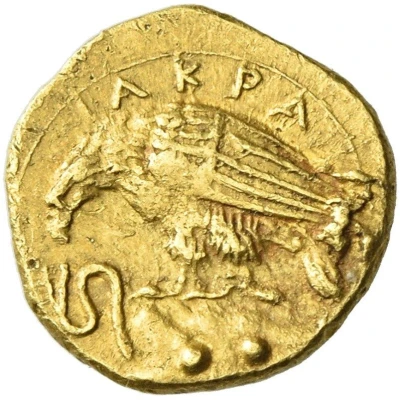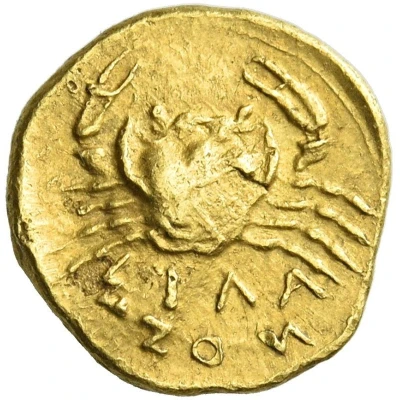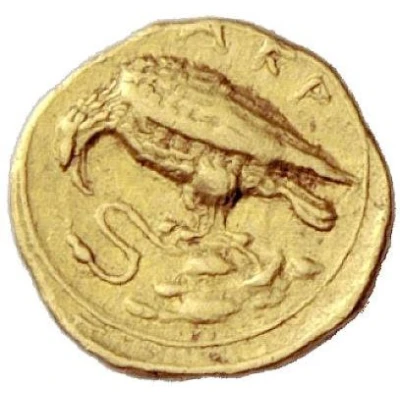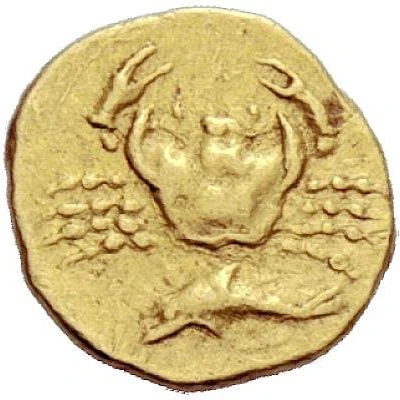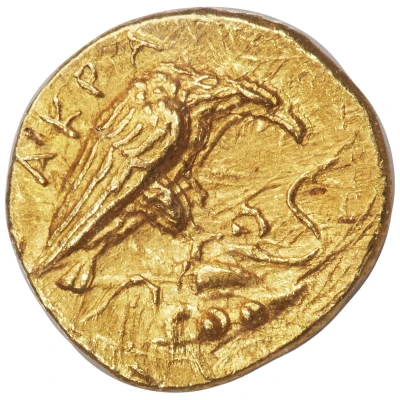
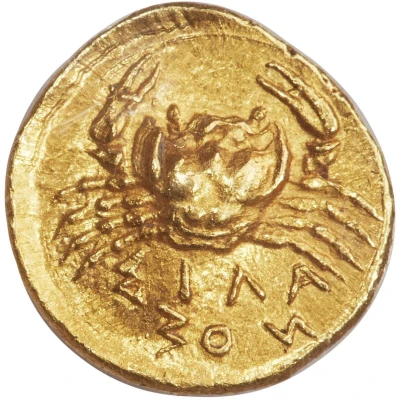

© Heritage Auctions
Diobol 410 BC - 406 BC
| Gold | 1.34 g | 11 mm |
| Issuer | Akragas (Sicily) |
|---|---|
| Type | Standard circulation coin |
| Years | 410 BC - 406 BC |
| Value | 4 Litrai |
| Currency | Litra |
| Composition | Gold |
| Weight | 1.34 g |
| Diameter | 11 mm |
| Shape | Round (irregular) |
| Technique | Hammered |
| Orientation | Variable alignment ↺ |
| Demonetized | Yes |
| Updated | 2024-10-10 |
| Numista | N#378125 |
|---|---|
| Rarity index | 100% |
Reverse
Crab. Inscription in two lines below (second line retrograde).
Script: Greek
Lettering:
ΣΙΛΑ
ΝΟΣ
Comment
Gulbenkian 171 var. (eagle left); Rizzo, pl. III, 8; Westermark, Akragas 1015; SNG ANS 998-999 var. (eagle left); HGC 2, 75 var. (eagle left).
This rare and short-lived issue was minted before the Carthaginians took the city in 406 BC, and was likely used to pay the mercenaries who defended the city against the Punic forces. Contemporary issues were struck at Gela, Stiela, and Camarina, before refugees fled toward Syracuse. It bears the name of a magistrate which is also found on contemporary tetradrachms (cf. SNG ANS 1000).
Extremely rare with eagle facing right, with less than five examples known.
Interesting fact
The Diobol coin was used as a form of currency in ancient Sicily and was equivalent to two obols, which was the standard unit of currency at the time. The fact that it was made of gold indicates that it was a valuable and highly sought-after coin, especially since gold was a rare and valuable metal in ancient times.
